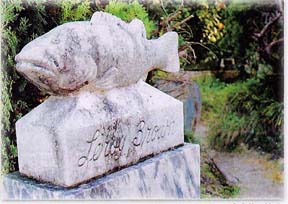 | The Leroy Brown statue in Eufaula is a tribute to the world's most famous bass. Picture by Tamika Moore, Advertiser |
| Leroy Brown World's Most Famous Bass! "Most bass are just fish, but Leroy Brown was something special." This is a reprint from the Nov. 21, 2002, Montgomery Advertiser. Used with permission. |
 | The Leroy Brown statue in Eufaula is a tribute to the world's most famous bass. Picture by Tamika Moore, Advertiser |
| Return to Index | Return to Beginning of Web Page | Some Must-Have Utilities |
